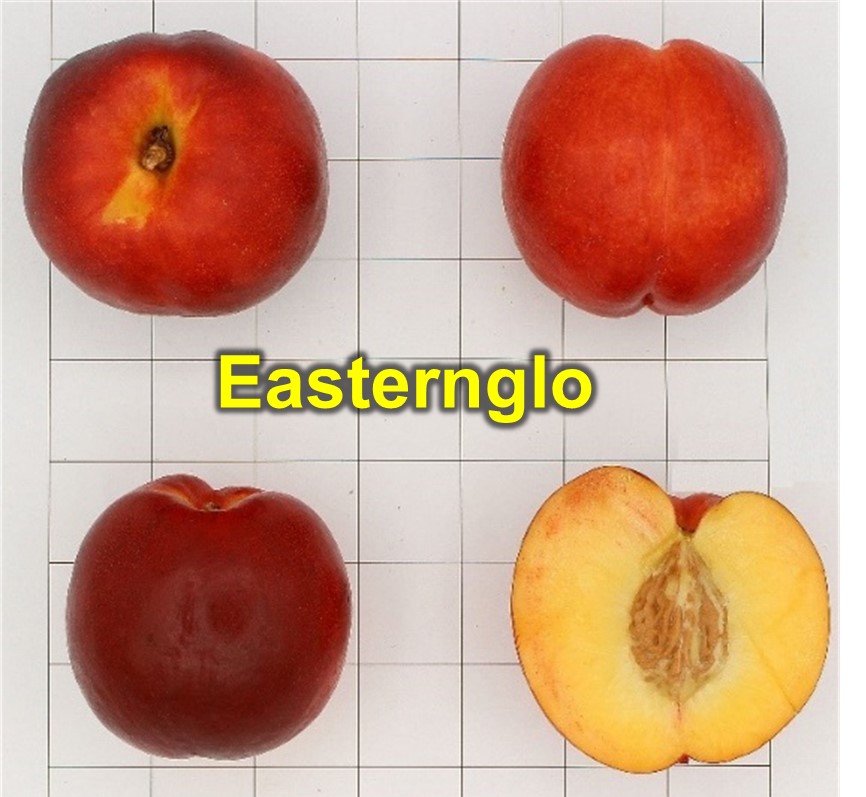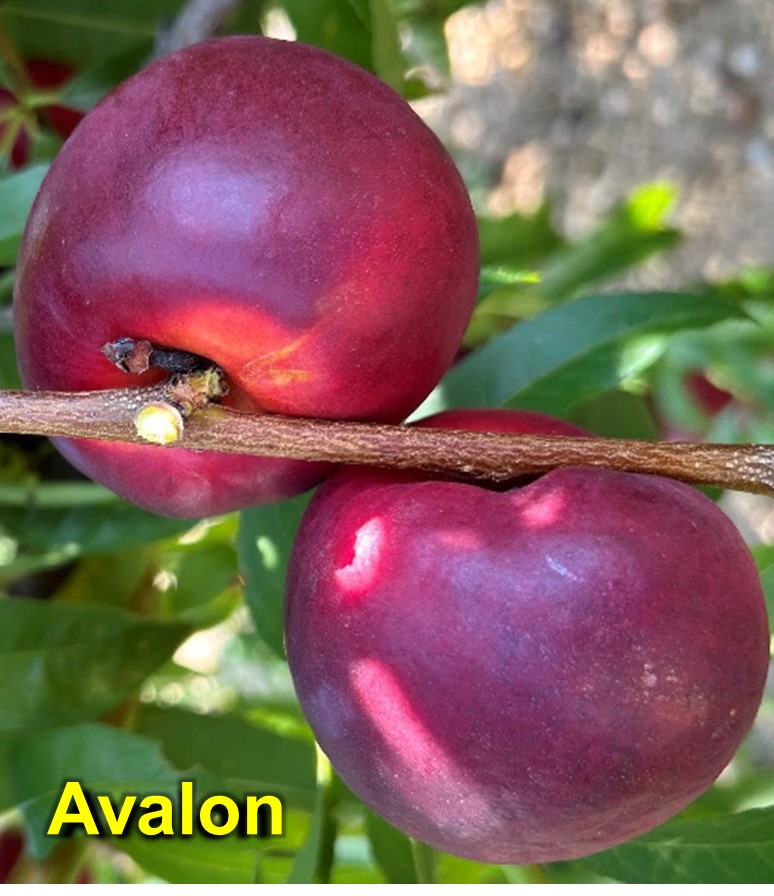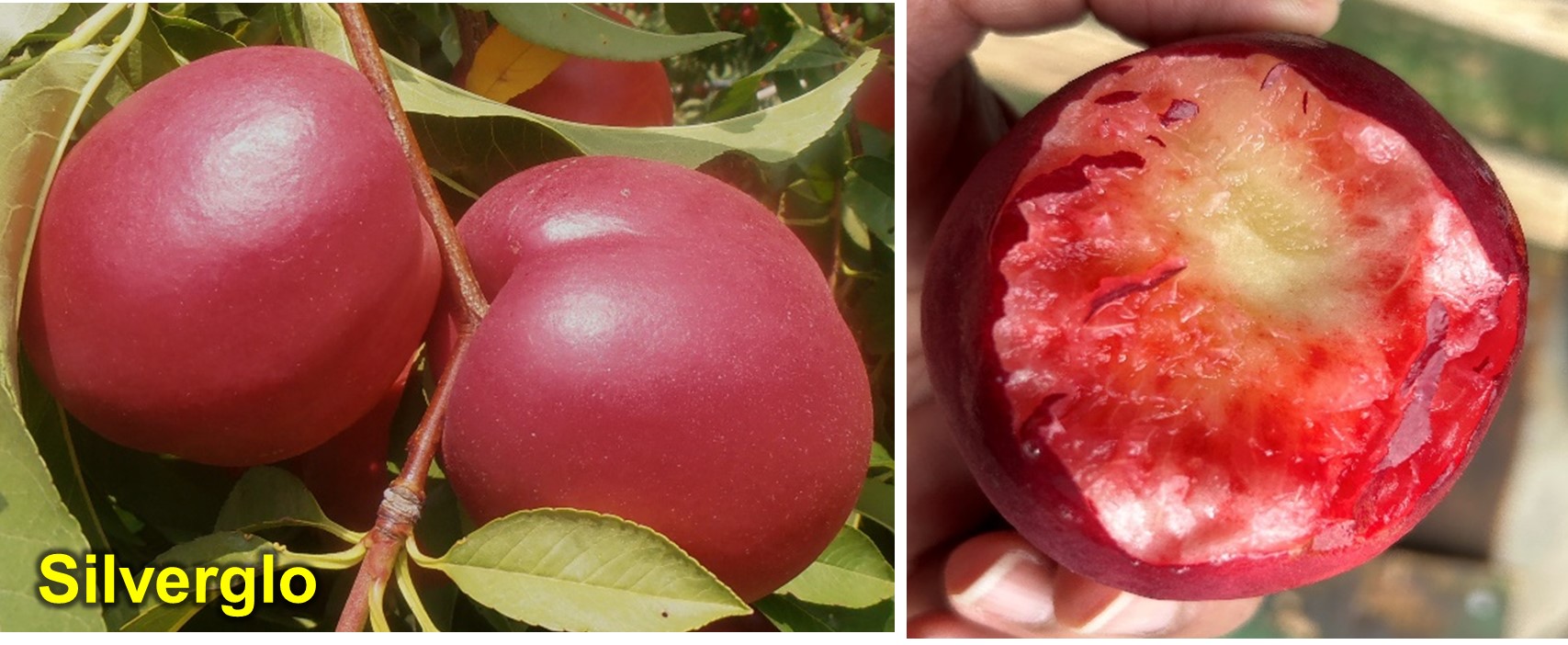There are four excellent, yellow and white-fleshed nectarine varieties harvested during mid-July. These varieties were developed at the Rutgers Fruit Breeding program and evaluated over the years at multiple Southern New Jersey locations. The ripening days could be a few days later for central and northern New Jersey.
 Silvergem is a cream-fleshed, clingstone nectarine ripening on July 11-15. This nectarine is very pretty and has bright, attractive, clean skin. It is 80% red with a cream-colored background. It handles cold temperatures very well. Silvergem has a perfect balance of sweetness and acidity, and tastes sweet and tangy. Flesh can develop a significant red as it ripens. The tree is vigorous and has low susceptibility to bacterial spot. It did have quite a few split and shattered pits.
Silvergem is a cream-fleshed, clingstone nectarine ripening on July 11-15. This nectarine is very pretty and has bright, attractive, clean skin. It is 80% red with a cream-colored background. It handles cold temperatures very well. Silvergem has a perfect balance of sweetness and acidity, and tastes sweet and tangy. Flesh can develop a significant red as it ripens. The tree is vigorous and has low susceptibility to bacterial spot. It did have quite a few split and shattered pits.
Silverglo – Introduced in 2018, is one of the most attractive and highly productive cream-fleshed nectarines in this growing season. It’s ripening overlaps at the tail-end of Silvergem and ripens between ‘Arctic Sweet’ and ‘Arctic Jay’. It is harvested July 14-18. Its fruit is larger, has a nice acidic flavor, is attractive, has a glossy, pinkish-red color, and has very few skin blemishes. The tree is moderately vigorous with low susceptibility to bacterial spot. Fruit is large to very large, uniform, and has a smooth and glossy finish. The flesh can turn up significantly red as the fruit gets riper.
 Easternaglo – A round-shaped scarlet-red over slightly yellowish-red ground color, yellow-fleshed, semi-clingstone nectarine ripening from July 13-16. The flesh is firm with a fair to good acidic flavor. The tree is upright-spreading, moderately productive, and moderately susceptible to bacterial spot. This beautiful nectarine hangs well on trees after achieving commercial maturity. However, if left on the tree too long, it will develop a skin disorder similar to sunburn.
Easternaglo – A round-shaped scarlet-red over slightly yellowish-red ground color, yellow-fleshed, semi-clingstone nectarine ripening from July 13-16. The flesh is firm with a fair to good acidic flavor. The tree is upright-spreading, moderately productive, and moderately susceptible to bacterial spot. This beautiful nectarine hangs well on trees after achieving commercial maturity. However, if left on the tree too long, it will develop a skin disorder similar to sunburn.
 Avalon is an excellent yellow-fleshed nectarine that ripens during July 11-13. The skin is glossy red to dark red, making it attractive. It has a balanced flavor and tastes very sweet and tangy. It has high productivity and produces bigger fruit compared to other varieties in its season. The tree is vigorous and has low susceptibility to bacterial leaf spots and can be a good option for replacing Easternglo.
Avalon is an excellent yellow-fleshed nectarine that ripens during July 11-13. The skin is glossy red to dark red, making it attractive. It has a balanced flavor and tastes very sweet and tangy. It has high productivity and produces bigger fruit compared to other varieties in its season. The tree is vigorous and has low susceptibility to bacterial leaf spots and can be a good option for replacing Easternglo.
Previous related articles
Early July Peach Varieties: https://plant-pest-advisory.rutgers.edu/early-july-peach-varieties-sentry-glenglo-ruby-prince-garnet-beauty-and-sugar-may/
Late June Peach Varieties: https://plant-pest-advisory.rutgers.edu/late-june-peach-varieties-for-new-jersey-new-and-standard/
llow-fleshed nectarine that ripens during July 11-13. The skin is glossy red to dark red, making it attractive. It has a balanced flavor and tastes very sweet and tangy. It has high productivity and produces bigger fruit compared to other varieties in its season. The tree is vigorous and has low susceptibility to bacterial leaf spots and can be a good option for replacing Easternglo.
Previous related articles
Early July Peach Varieties: https://plant-pest-advisory.rutgers.edu/early-july-peach-varieties-sentry-glenglo-ruby-prince-garnet-beauty-and-sugar-may/
Late June Peach Varieties: https://plant-pest-advisory.rutgers.edu/late-june-peach-varieties-for-new-jersey-new-and-standard/





